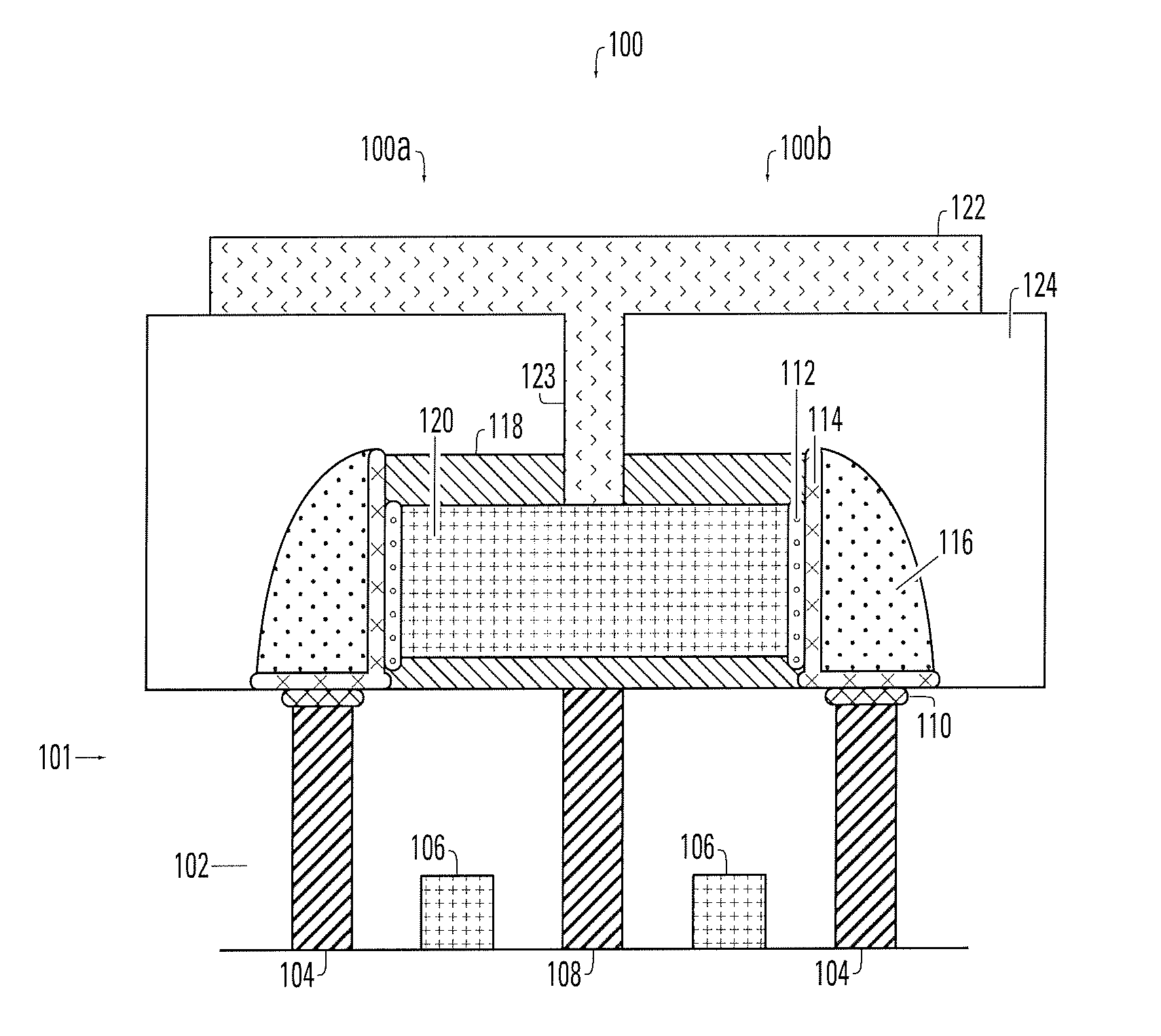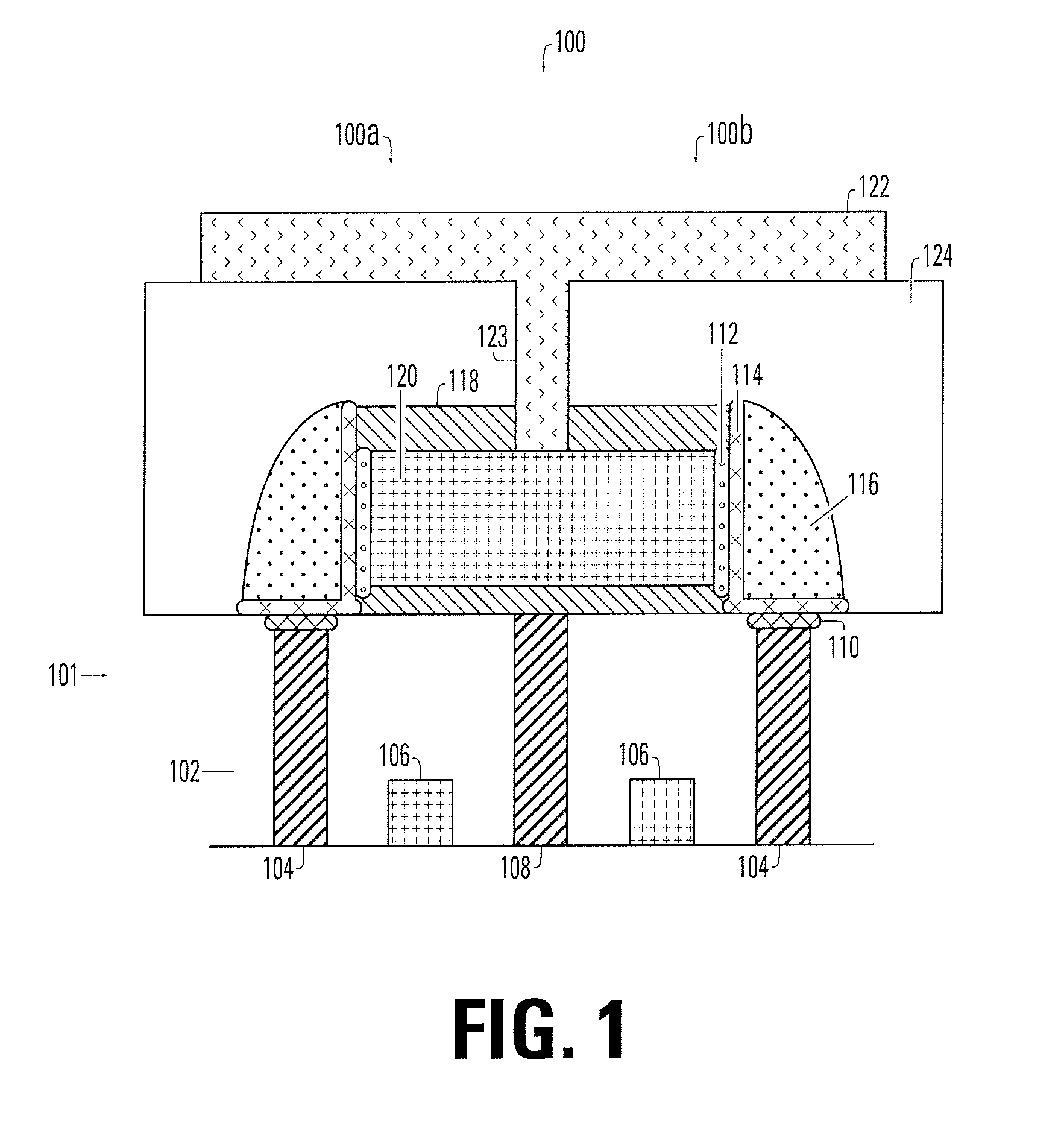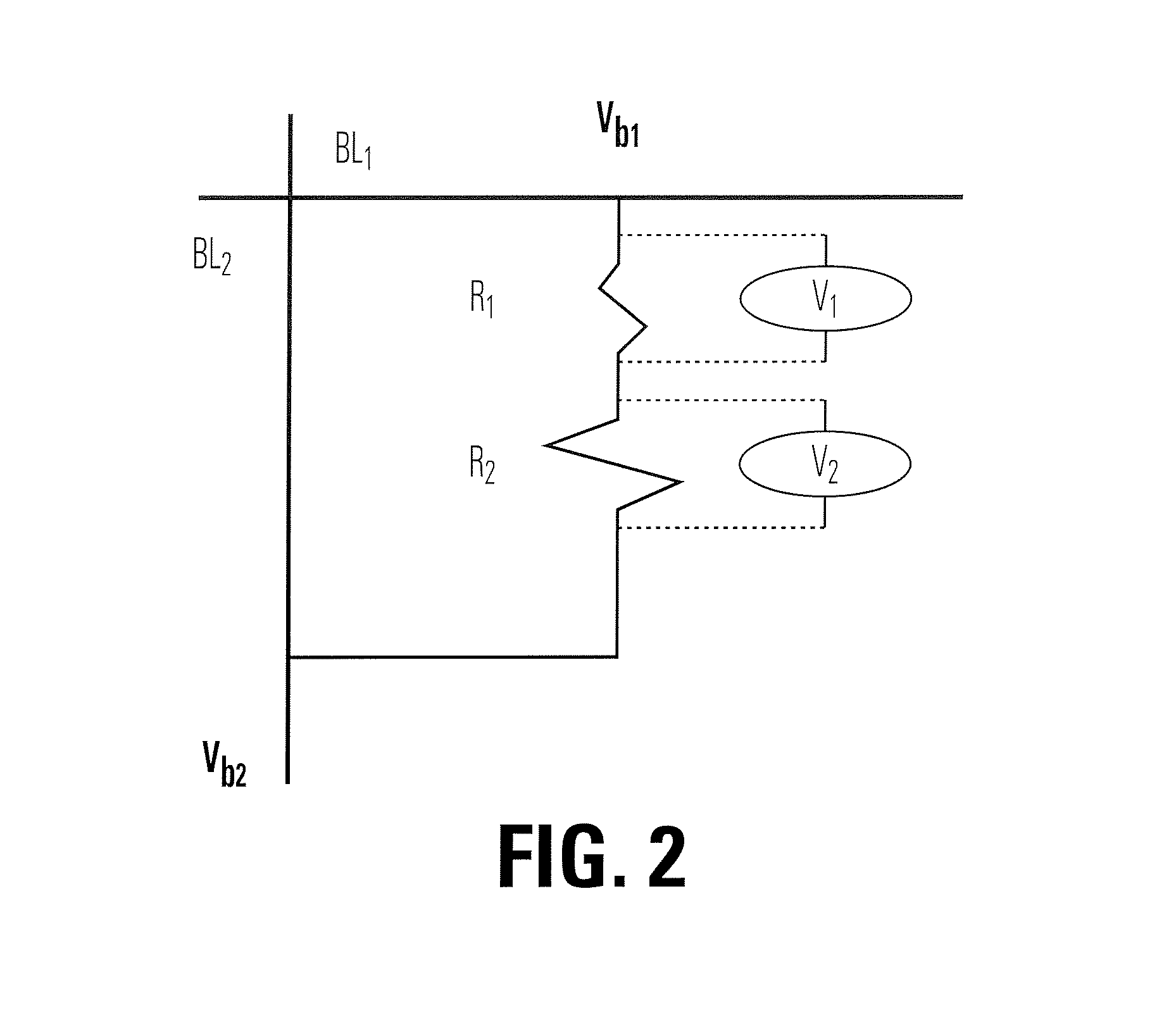Method and Apparatus for Non-Volatile Multi-Bit Memory
a multi-bit memory and non-volatile technology, applied in the direction of digital storage, semiconductor devices, instruments, etc., can solve the problems of affecting the development of the industry, and affecting the development of the next generation of devices
- Summary
- Abstract
- Description
- Claims
- Application Information
AI Technical Summary
Problems solved by technology
Method used
Image
Examples
Embodiment Construction
[0016]A detailed description of multi-bit memory cells, arrays of such memory cells, and methods for manufacturing such memory cells, is provided with reference to FIGS. 1-6.
[0017]FIG. 1 depicts an embodiment 100 of a memory cell incorporating memory elements 100a, 100b that respond to the requirements of the claims appended hereto. As is generally practiced in memory element designs, the memory element shown and discussed here is part of a larger memory circuit, in which memory elements 100a and 100b are components of memory cell 100. Memory cells are arrayed for controlled access, and a complete memory unit can hold a billion or more memory elements. The circuit arrangements apart from the memory element are outside the scope of this invention. A typical memory circuit can be seen in U.S. patent application Ser. No. 11 / 155,067, entitled “Thin Film Fuse Phase Change Ram and Manufacturing Method”, commonly owned with the application herein, which patent application is hereby incorpo...
PUM
 Login to View More
Login to View More Abstract
Description
Claims
Application Information
 Login to View More
Login to View More - R&D
- Intellectual Property
- Life Sciences
- Materials
- Tech Scout
- Unparalleled Data Quality
- Higher Quality Content
- 60% Fewer Hallucinations
Browse by: Latest US Patents, China's latest patents, Technical Efficacy Thesaurus, Application Domain, Technology Topic, Popular Technical Reports.
© 2025 PatSnap. All rights reserved.Legal|Privacy policy|Modern Slavery Act Transparency Statement|Sitemap|About US| Contact US: help@patsnap.com



